Rotation
Determining new coordinates using a picture
You can determine the new coordinates of an object
Only if
the origin is (0,0)
and only if
you rotate `90^@`, `180^@` or `270^@`
Remember this picture:
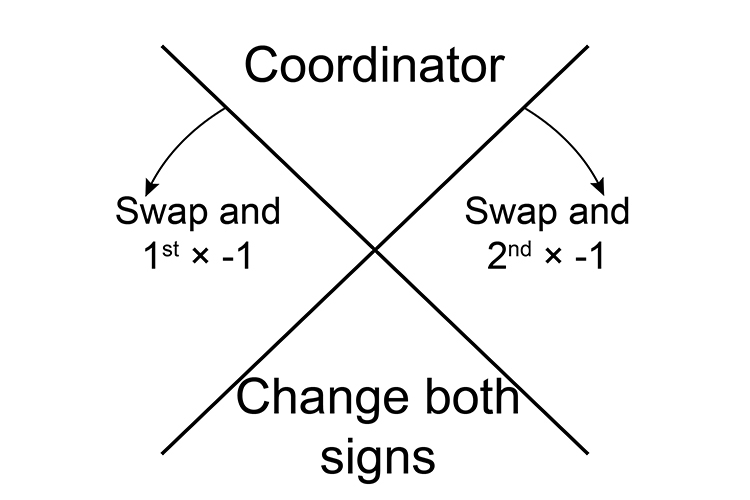
The above says:
- Move clockwise 90°
- Swap the coordinates
- Then multiply the second coordinate by `-1`
- Move anticlockwise 90°
- Swap the coordinates
- Then multiply the first coordinate by `-1`
- Move 180°
- Just change both signs
Example 1
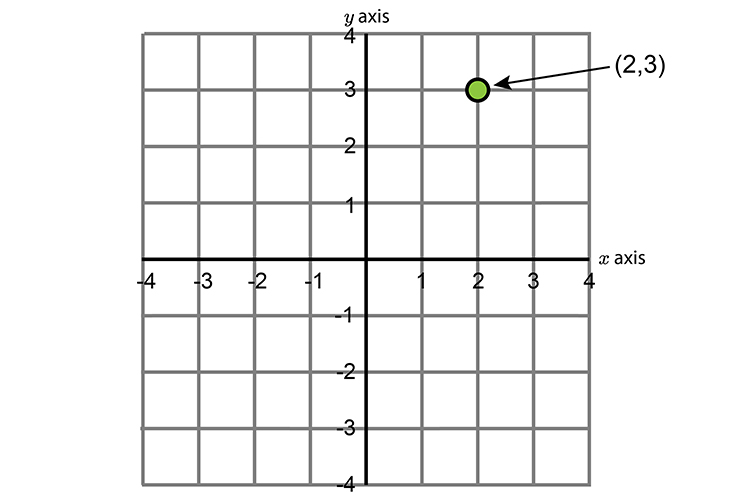
With origin (0,0) rotate the point (2,3) by
- Clockwise 90°
- Anticlockwise 90°
- Through 180°
and plot your answers
Answer:
To remember how to do this write out the following:

- Clockwise 90°
- Swap the coordinates:
The coordinates are`(2,3)`
swap and they become `(3,2)` - Then multiply the second coordinate by `-1`:
`(3,2)` becomes `(3,-2)`
- Swap the coordinates:
- Anticlockwise 90°
- Swap the coordinates:
The coordinates are`(2,3)`
swap and they become `(3,2)` - Then multiply the first coordinate by `-1`:
`(3,2)` becomes `(-3,2)`
- Swap the coordinates:
- Through 180°
- Just change the signs:
The coordinates are `(2,3)`
`(2,3)` becomes `(-2,-3)`
- Just change the signs:
Plot the answer:
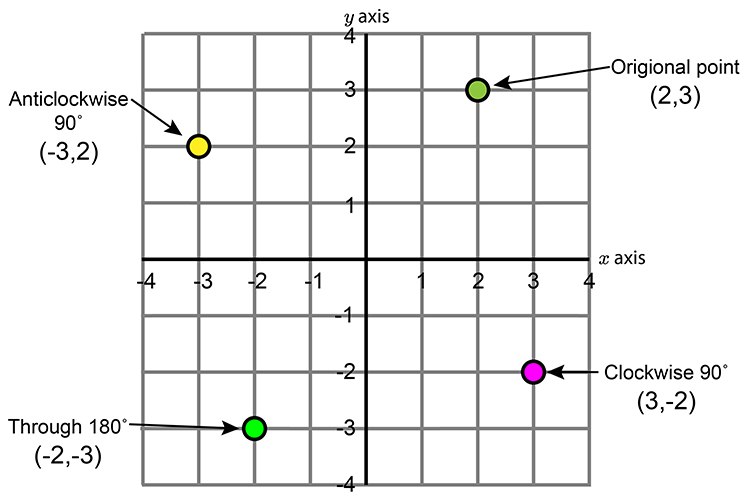
Example 2
Rotate The object below anticlockwise by 90° with origin (0,0).
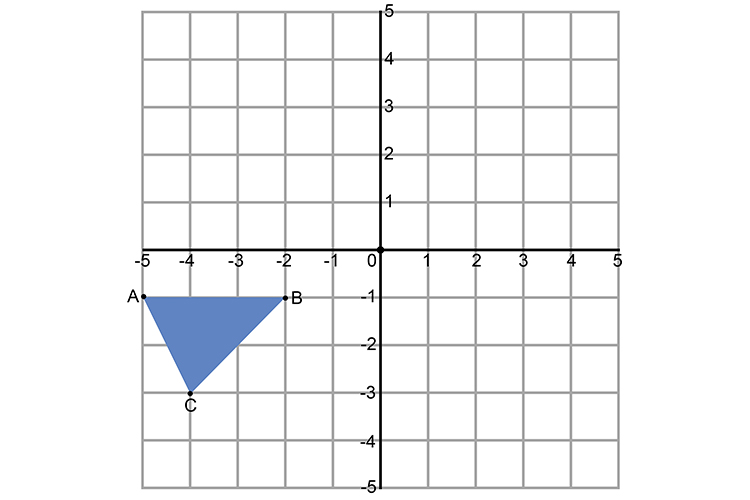

So we would use: SWAP and 1st number `times-1`
Point A `=(-5,-1)` becomes `(-1(times-1),-5)=(1,-5)`
Point B `=(-2,-1)` becomes `(-1(times-1),-2)=(1,-2)`
Point C `=(-4,-3)` becomes `(-3(times-1),-4)=(3,-4)`
The graph becomes:

Does this look correct? YES IT DOES
Example 3
Rotate the triangle below anticlockwise by 90° with origin (0,0).
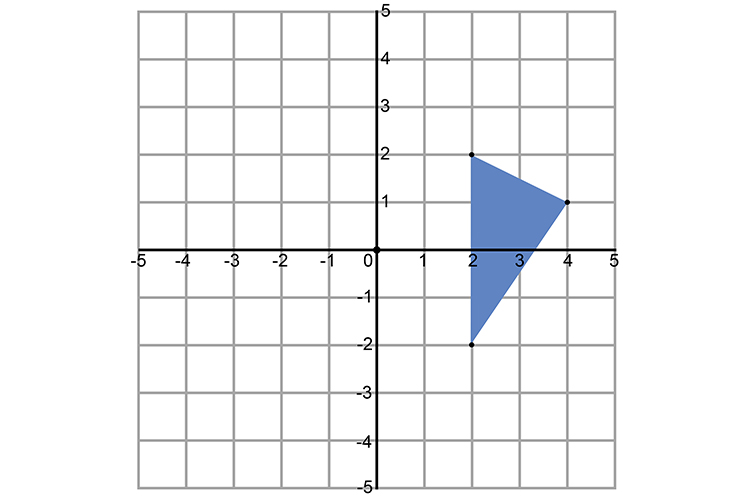
Use
We would use: SWAP and 1st number `times-1`
`A=(1,2)` becomes `(2times(-1),1)=(-2,1)`
`B=(3,1)` becomes `(1times(-1),3)=(-1,3)`
`C=(2,-2)` becomes `(-2times(-1),2)=(2,2)`
The graph becomes:
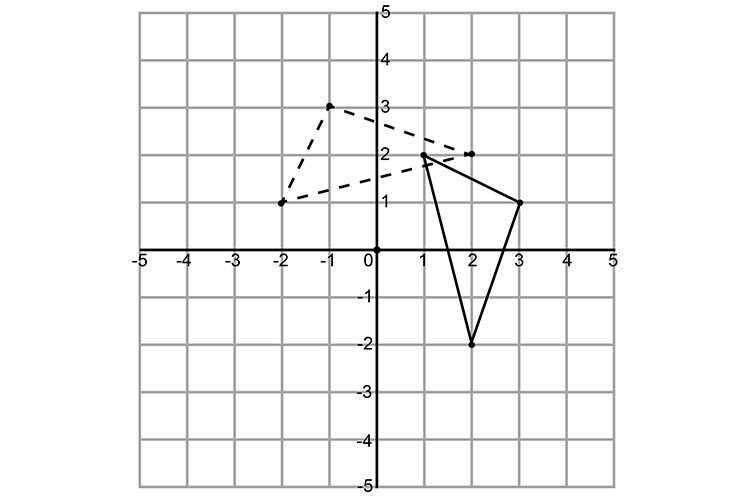
Example 4
Rotate the line below by 180° with the origin at (0,0).
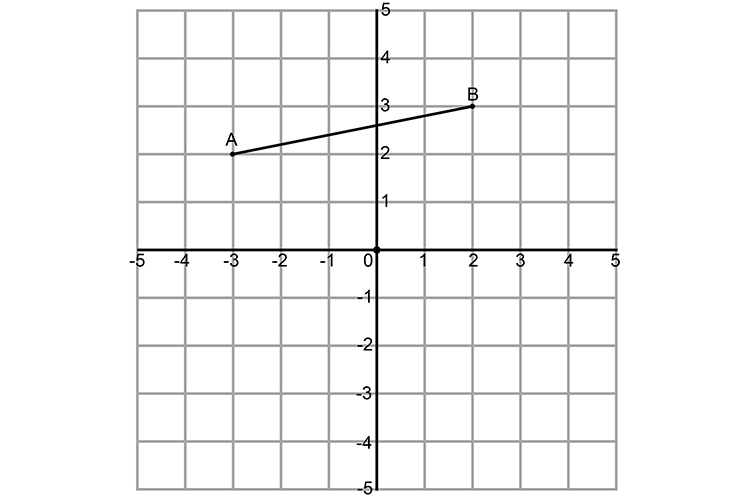
Use
We would use: Change both signs
So if `A=(-3,2)` and `B=(2,3)`
The new coordinates would be:
`A^1=(3,-2)` and `B^1=(-2,-3)`
Plot the results:
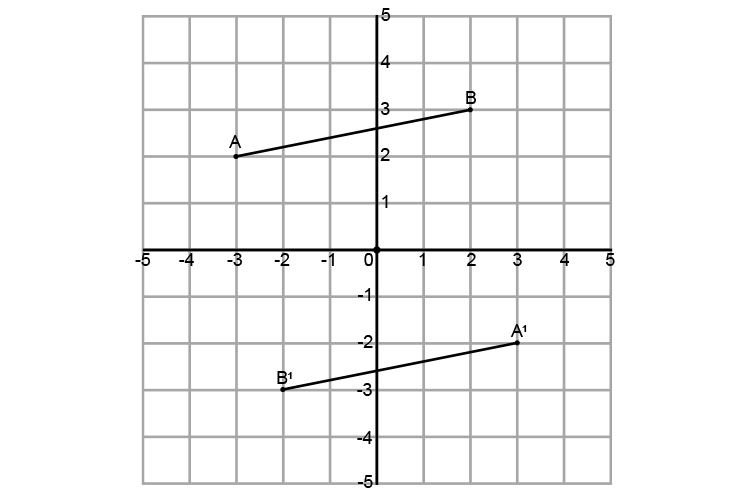
As a check you could run `A` and `B` through the origin and see if they hit`A^1` and `B^1` at the same distance from the origin:
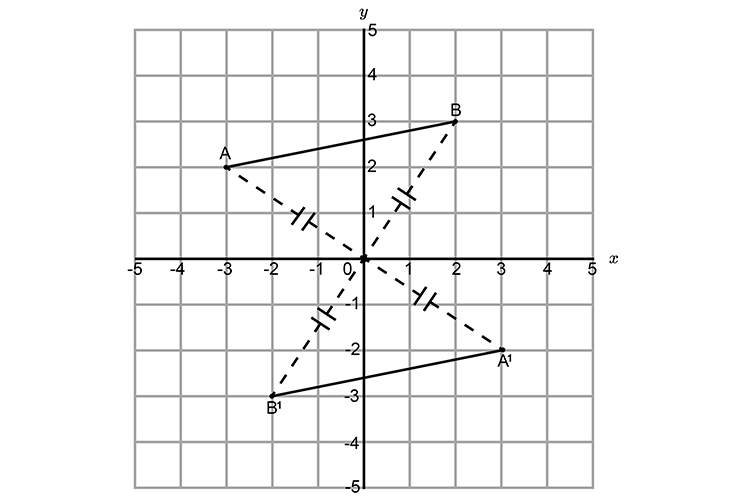
This is correct.




